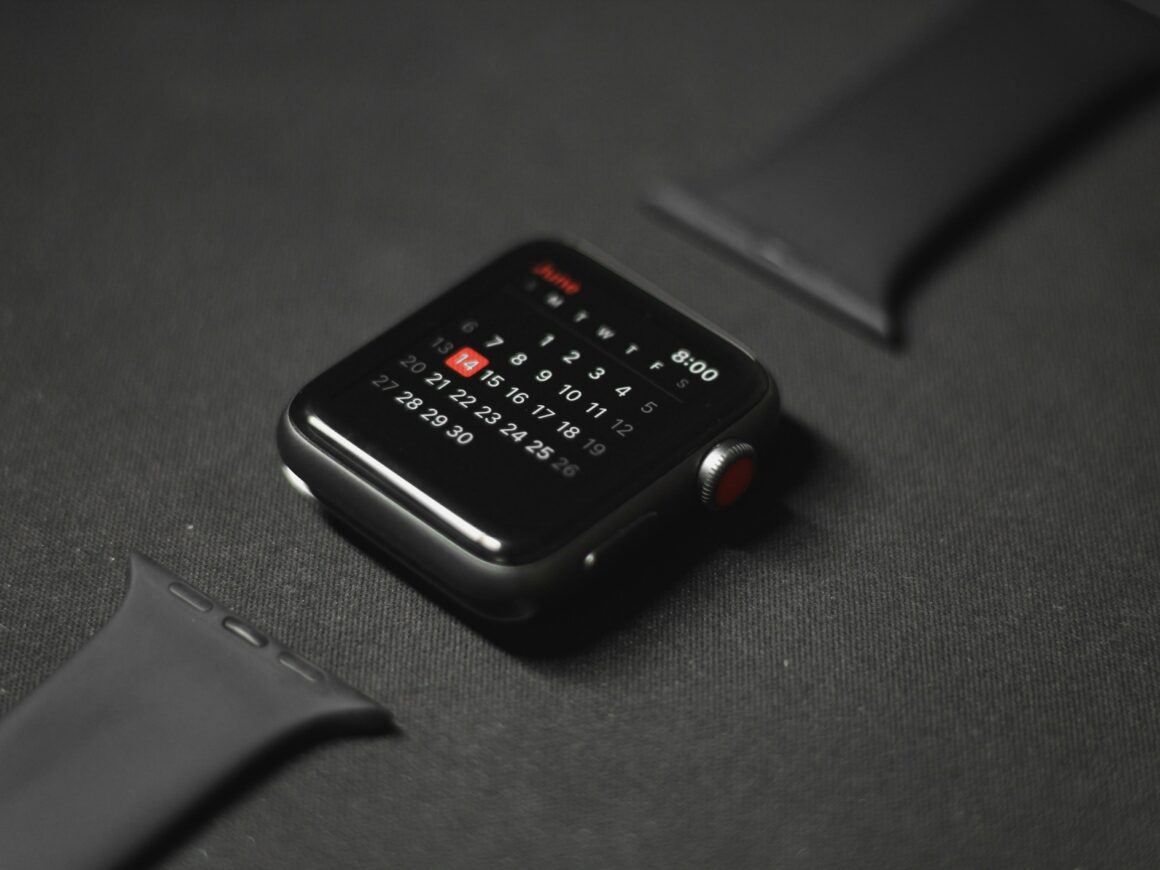Introduction
The smartwatch industry has witnessed exponential growth over the past few years, transforming from a niche market into a mainstream necessity. What was once a luxury item has now become a staple in the daily lives of millions, acting as a companion that not only tells time but also helps monitor health, track fitness, and even manage day-to-day tasks. This surge in popularity can be attributed to technological advancements, the increasing focus on health and fitness, and the convenience of having smartphone-like capabilities right on one’s wrist.
In this fast-evolving market, choosing the right smartwatch can be a daunting task. With an array of brands offering varied features, designs, and price points, comparing these aspects becomes crucial before making a purchase. Whether you’re looking for a device that tracks your swimming laps, manages your notifications, or simply tells you the time in style, understanding the specific features and how they match your needs is key.
In this comprehensive guide, we turn our focus to one of the market leaders – the Apple Watch – and pit it against its main competitors, including giants like Samsung, Garmin, and Fitbit. This comparison aims to dissect the features, design, usability, and value for money of these leading smartwatches, helping you make an informed decision tailored to your lifestyle and preferences. From health and fitness tracking capabilities to battery life and overall design, we delve deep into what sets each smartwatch apart in this highly competitive market.
1: Introduction to the Contenders
The smartwatch industry is brimming with options, each boasting its unique set of features and innovations. At the forefront is the Apple Watch, known for its seamless integration with the iOS ecosystem, stylish design, and comprehensive health and fitness tracking capabilities. However, it’s not alone in the race. Competitors like the Samsung Galaxy Watch, Fitbit, and Garmin are close on its heels, offering varying features that cater to different user needs. Let’s delve into an overview of these contenders, highlighting their key features and unique selling points.
1.1 Apple Watch:
The Apple Watch is renowned for its sleek design, high-quality build, and deep integration with iPhone, offering features such as iMessage synchronization, Apple Pay, and seamless handoff from other Apple devices. Health and fitness tracking is a major selling point, with advanced sensors providing accurate readings on heart rate, blood oxygen levels, and even ECG capabilities. The Apple Watch also stands out for its extensive app ecosystem, customizable watch faces, and the new Family Setup feature, allowing users to stay connected even without their iPhone.
1.2 Samsung Galaxy Watch:
Samsung’s Galaxy Watch series is a strong contender, known for its circular design that mimics traditional watches, robust build quality, and a rotating bezel for easy navigation. It operates on Samsung’s Tizen OS, offering smooth performance and a decent selection of apps. The Galaxy Watch excels in sleep tracking and battery life, often outperforming the Apple Watch in longevity. It also features comprehensive health tracking, including heart rate monitoring, blood pressure measurement, and stress tracking, making it a solid choice for Android users.
1.3 Fitbit:
Fitbit has long been synonymous with fitness tracking, and its range of smartwatches like the Fitbit Versa and Fitbit Sense focus heavily on health and wellness. Fitbit devices offer detailed sleep analysis, multi-sport tracking, and an extensive database for logging food and hydration, making them ideal for those focused on improving their health and fitness levels. While the smartwatch capabilities might not be as extensive as Apple’s or Samsung’s, Fitbit’s strength lies in its user-friendly interface and long battery life.
1.4 Garmin:
Garmin smartwatches are tailored for the fitness enthusiast and outdoor adventurer. Known for their rugged design, these watches offer unparalleled GPS accuracy, a plethora of activity tracking options, and long battery life suited for extended outdoor activities. The Garmin Connect platform provides in-depth analysis of workout data, making it a favorite among athletes and hikers. While it may lack the smartphone integration and app variety of its competitors, the focus on fitness and durability makes Garmin a top choice for sports and outdoor activities.
Each of these contenders brings something unique to the table, from design and ecosystem integration to specialized health and fitness tracking capabilities. Depending on your priorities – be it a seamless smartphone extension, in-depth health monitoring, or rugged outdoor use – there is a smartwatch designed to meet your needs.
2: Design and Display Comparison
When it comes to smartwatches, the design is not just about aesthetics; it’s about functionality and comfort too. The Apple Watch boasts a modern, square design with rounded corners, offering a range of materials from aluminum to stainless steel and titanium, catering to different tastes and budgets. Its bands are easily swappable, allowing for a high degree of personalization. The display is bright and clear, with OLED technology ensuring deep blacks and vibrant colors. The Apple Watch is known for its always-on display feature, improving visibility without a significant hit to battery life.
In contrast, the Samsung Galaxy Watch opts for a traditional circular design, appealing to those who prefer a classic watch look. It uses durable materials like stainless steel and high-strength aluminum, and its unique rotating bezel adds a tactile element to navigation. The AMOLED display offers excellent brightness and color, with the option to keep the screen on for easy time checking.
Fitbit smartwatches tend to focus more on comfort and practicality, with lightweight designs that can be worn all day and night. Their screens, while not as vivid as Apple’s or Samsung’s, are sufficiently bright and clear for outdoor visibility. The emphasis is on providing a seamless fitness tracking experience rather than cutting-edge display technology.
Garmin’s offerings are built for the outdoors, featuring robust designs that can withstand tough conditions. The displays are often transreflective, which means they are easily readable in direct sunlight, a significant advantage for outdoor activities. However, they might not look as vibrant as their competitors in low-light conditions.
3: Health and Fitness Features
The Apple Watch sets a high standard for health and fitness features, offering comprehensive tracking that includes heart rate monitoring, ECG, blood oxygen monitoring, and an array of workout modes. It’s particularly noted for its accuracy in tracking various forms of exercise and its integration with the Health app, providing a holistic view of the user’s health.
Samsung’s Galaxy Watch follows closely, with a strong focus on health features like heart rate monitoring, sleep tracking, and stress management. It also offers blood pressure monitoring and ECG, although availability varies by region. Its health ecosystem is robust, though it leans more heavily on integration with Samsung’s own devices and services.
Fitbit devices shine in this category, offering detailed sleep tracking, stress management, and an impressive range of fitness tracking modes. While they may not offer the same breadth of smartwatch features as Apple or Samsung, their strength lies in their detailed health insights and the user-friendly Fitbit app.
Garmin excels in fitness tracking, especially for outdoor and athletic activities. It offers advanced features like VO2 max estimates, recovery advice, and detailed GPS tracking for more types of exercises than most competitors. While its health monitoring features are comprehensive, Garmin’s focus is decidedly on fitness and outdoor activities.
4: Battery Life and Connectivity
Battery life varies significantly among the different smartwatch models. The Apple Watch typically requires nightly charging, with an average battery life of about 18 hours, which can be shorter with heavy use. In contrast, Samsung Galaxy Watches can last around two days on a single charge, and Fitbit devices, depending on the model, can go up to six days without charging, which is ideal for sleep tracking and less frequent charging routines.
Garmin watches outshine the competition in battery life, with some models lasting up to two weeks on a single charge in smartwatch mode, making them excellent for extended trips and outdoor adventures.
As for connectivity, all these devices support Bluetooth and Wi-Fi, allowing them to connect to smartphones, headphones, and other devices. LTE versions are available for both the Apple Watch and Samsung Galaxy Watch, offering independence from a smartphone. However, this feature tends to drain the battery more quickly. NFC for contactless payments is available on Apple, Samsung, and some Fitbit models, adding convenience for on-the-go transactions.
The charging methods differ: Apple Watches use a magnetic charging puck, Samsung and Garmin devices typically use a charging dock, and Fitbit uses a variety of proprietary chargers. The time it takes to fully charge the devices varies, with most requiring around 1 to 2 hours to reach full battery.
In terms of overall connectivity, each brand offers different levels of integration depending on the smartphone ecosystem, with Apple Watch working seamlessly with iOS devices, while Samsung, Fitbit, and Garmin offering broader compatibility across both Android and iOS platforms.
5: Smart Features and Applications
The operating system of a smartwatch significantly influences its user experience, available applications, and smart features. Apple’s watchOS is known for its intuitive interface, seamless integration with iOS, and extensive app library available through the App Store. Users have access to a wide variety of apps, from fitness and health to productivity and entertainment. The Siri voice assistant on the Apple Watch allows for hands-free operation, sending messages, making calls, and controlling smart home devices directly from your wrist. Notifications are smoothly handled, mirroring those on your iPhone, ensuring you never miss important information.
On the other side, smartwatches from Samsung operate on Tizen OS, known for its efficiency and smooth performance. While the app ecosystem is not as vast as Apple’s, it covers most of the essential applications users expect from a smartwatch. Samsung’s Bixby voice assistant offers voice commands, albeit with a more limited scope compared to Siri. Notifications and message handling are well implemented, ensuring users stay connected.
Fitbit devices, while not traditionally known for their smartwatch features, have improved significantly with the introduction of Fitbit OS. The focus remains on health and fitness, but users can also access a range of apps and smart features, including quick replies to messages (for Android users) and notifications. However, the voice assistant feature and app availability are more limited compared to Apple and Samsung.
Garmin watches operate on their proprietary OS, which prioritizes fitness and outdoor functionalities over typical smartwatch features. While you won’t find an extensive app store, Garmin provides all the necessary features for fitness tracking, navigation, and notifications. Voice assistant capabilities are not typically found on Garmin devices, which may be a drawback for those looking for a more interactive smartwatch experience.
6: Price and Value Comparison
The price range for smartwatches varies significantly, reflecting differences in features, build quality, and brand prestige. The Apple Watch series ranges from the more affordable SE model to the high-end Edition models, accommodating a wide range of budgets but generally skewing towards the premium side. In terms of warranties and support, Apple offers a standard one-year warranty with options to extend through AppleCare+, alongside comprehensive customer service.
Samsung’s Galaxy Watch models are typically priced slightly lower than the Apple Watch, offering a good balance between functionality and cost. They come with a standard one-year warranty, similar to Apple, with various customer support options available.
Fitbit’s range tends to be more budget-friendly, appealing to users primarily interested in fitness tracking. They offer a one-year warranty and standard customer support. The lower price point makes Fitbit an attractive option for those who prioritize health and fitness features over advanced smartwatch functionalities.
Garmin’s pricing varies widely depending on the model, with more basic fitness trackers at lower price points and advanced multisport watches reaching premium levels. Garmin offers a one-year warranty, consistent with the industry standard, and provides robust support for its products.
When evaluating overall value for money, consider not only the initial purchase price but also the cost of any additional accessories, the longevity and durability of the device, and how well it fits your specific needs and lifestyle. While the Apple Watch offers a premium smartwatch experience with a wide range of features, Samsung, Fitbit, and Garmin provide competitive alternatives focusing on different aspects such as battery life, fitness tracking, and outdoor use.
7: Pros and Cons Summary
Navigating the smartwatch landscape can be complex, with each brand offering its own set of strengths and weaknesses. Below is a summary of the pros and cons of the Apple Watch compared to other smartwatches, along with personal recommendations tailored to different user needs.
7.1 Apple Watch:
- Pros: Seamless integration with iOS devices; wide range of apps; advanced health and fitness features; high-quality build and design; extensive customization options.
- Cons: Higher price point; battery life shorter than competitors; limited compatibility with Android devices.
7.2 Samsung Galaxy Watch:
- Pros: Classic watch design; rotating bezel for navigation; good health and fitness tracking; Tizen OS’s smooth performance; better battery life than Apple Watch.
- Cons: Fewer third-party apps compared to watchOS; Bixby less capable than Siri; primarily optimized for Samsung smartphones.
7.3 Fitbit:
- Pros: Focus on health and fitness; long battery life; sleep tracking capabilities; user-friendly interface; generally more affordable.
- Cons: Limited smartwatch functionality; smaller app selection; less premium build quality.
7.4 Garmin:
- Pros: Rugged design; exceptional battery life; superior GPS and fitness tracking features; great for outdoor and athletic use.
- Cons: Limited smartwatch features; less intuitive interface; limited app selection; higher price for advanced models.
7.5 Personal Recommendations:
- Fitness Enthusiasts: If your main focus is on fitness tracking, particularly for outdoor activities or intensive training, Garmin smartwatches are the top choice due to their robust fitness features and durability. Fitbit devices are also a good option for those who prioritize health metrics like sleep and heart rate monitoring but at a more budget-friendly price.
- Tech-Savvy Users: For those who want a smartwatch that offers a wide range of applications, smooth integration with other tech, and cutting-edge features, the Apple Watch is unbeatable, especially for iPhone users. It provides a polished experience with the largest selection of apps and advanced features like ECG and blood oxygen monitoring.
- Budget-Conscious Buyers: If you’re looking for a smartwatch that covers basic fitness tracking and notifications without breaking the bank, Fitbit offers several models that balance functionality and cost. Their devices provide essential smartwatch features with an emphasis on health and fitness at a more accessible price point.
- Android Users: Samsung Galaxy Watch is the ideal choice for Android users, especially those with Samsung smartphones. It offers a balanced combination of smartwatch and fitness features with a traditional design and good battery life.
Choosing the right smartwatch depends on balancing what features are most important to you with your budget. Whether you prioritize comprehensive health tracking, seamless smartphone integration, or outdoor functionality, there is a smartwatch tailored to your lifestyle and needs.
Conclusion
In this comprehensive comparison, we’ve dissected the key features, designs, and functionalities of the Apple Watch against its main competitors: Samsung Galaxy Watch, Fitbit, and Garmin. Each brand offers unique strengths suited to different lifestyles and needs. The Apple Watch shines with its seamless integration with iOS, extensive app library, and advanced health features, making it a top choice for iPhone users who value a high-tech, all-around smartwatch experience. However, its higher price point and shorter battery life compared to competitors are notable drawbacks.
On the other hand, the Samsung Galaxy Watch provides an excellent alternative for Android users, offering a balance between smartwatch capabilities and fitness tracking, all wrapped up in a classic watch design. Fitbit remains a strong contender for those prioritizing health and fitness monitoring at a more affordable price, while Garmin stands out for its rugged build and superior GPS features, catering especially to outdoor enthusiasts and athletes.
My personal thoughts lean towards the perspective that the best smartwatch depends on the user’s primary needs and tech ecosystem. The Apple Watch is undeniably a market leader, but its competitors offer compelling features that can better suit specific requirements, particularly in terms of battery life, fitness tracking precision, and affordability.
I encourage you, the reader, to share your experiences or raise questions in the comments below. Have you used any of these smartwatches? How have they impacted your daily routine or fitness goals? Are there particular features you wish to know more about or insights you can share with fellow readers? Your feedback not only enriches our discussion but also helps others navigate the complex world of smartwatches. Join the conversation and let us know your thoughts!







